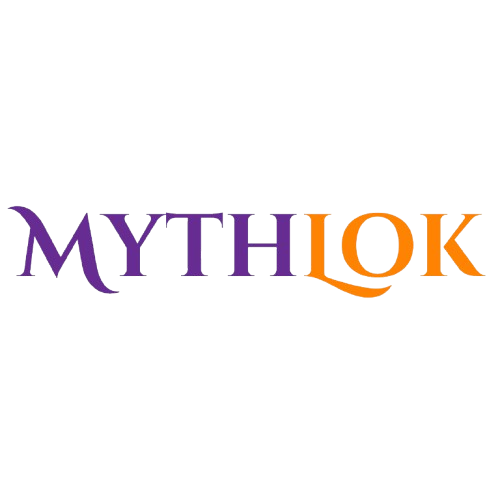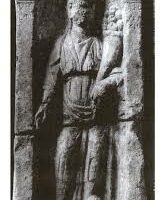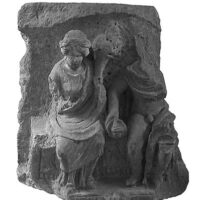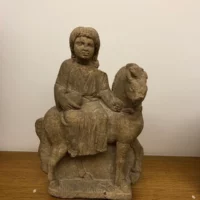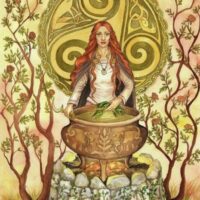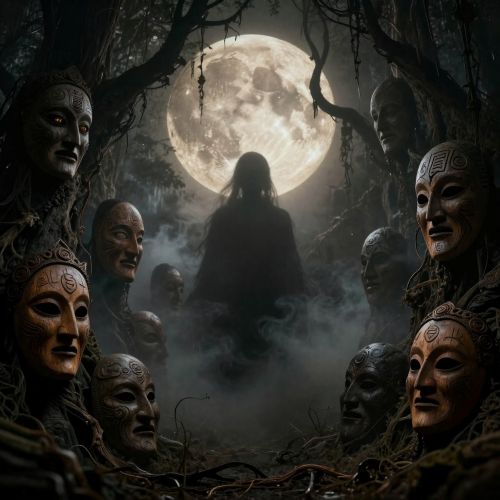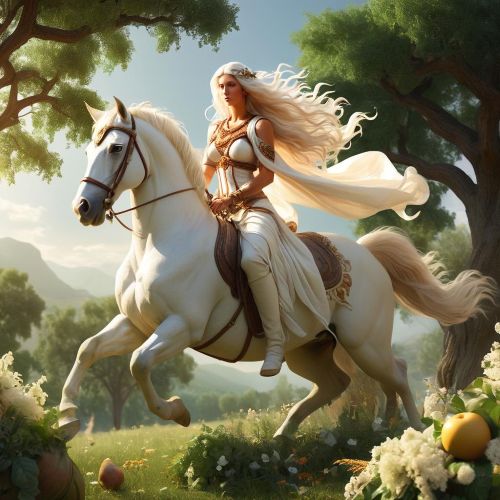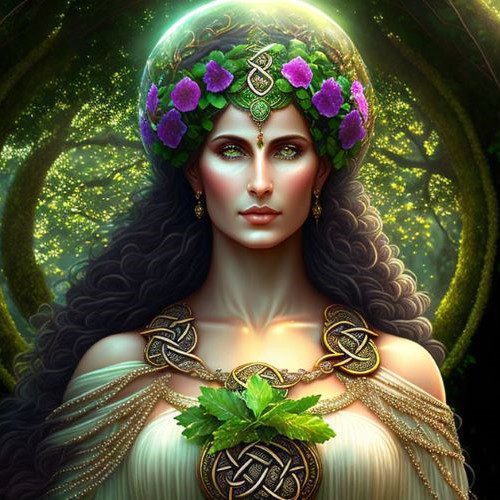Rosmerta : Goddess of Abundance
Listen
At a glance
| Description | |
|---|---|
| Origin | Gaulish Mythology |
| Classification | Gods |
| Family Members | N/A |
| Region | France, British Isles |
| Associated With | Abundance, Fertility, Prosperity |
Rosmerta
Introduction
Rosmerta was a beloved goddess in the Gallo-Roman world, deeply connected to themes of fertility, prosperity, and abundance. Her name, rooted in ancient Gaulish, loosely translates to “Great Provider,” a fitting title for a deity who symbolized generosity and care. Though often associated with the Roman god Mercury, she stood as a powerful figure in her own right, revered across both Celtic and Roman communities. Her role bridged spiritual and everyday life, offering blessings of wealth, well-being, and a bountiful existence.
Physical Traits
Artistic portrayals of Rosmerta consistently emphasize her nourishing nature. She’s often seen holding a cornucopia overflowing with fruits and grains, a clear emblem of plenty. In some depictions, she carries a patera, a ritual bowl used in offerings, or a coin purse, reflecting her association with prosperity. One especially unique statue from Fins d’Annecy even shows her adorned with Mercury’s winged cap, seated on a rock, holding a purse — a rare visual fusion of their powers. Regardless of the specifics, her image always reinforces her nurturing and generous spirit.
Family
While Rosmerta is often shown alongside Mercury, their exact relationship is open to interpretation. Some suggest she was his consort, while others speculate she may have represented an older, maternal figure within the mythological hierarchy. Unlike many divine pairings, their depictions rarely show romantic intimacy, suggesting a symbolic partnership rather than a romantic one. In certain regions, she was even connected to other gods like Wotan or Esus, showing how her identity adapted across cultural boundaries. Still, she was never overshadowed—Rosmerta’s presence remained distinct and commanding.
Other names
Rosmerta’s name, composed of the Gaulish roots ro- (“great”) and smert- (“provider” or “carer”), paints a vivid picture of her essence. Variants such as Atesmertis and Cantismerta appear in inscriptions, possibly reflecting local interpretations or sister deities with similar roles. Some scholars connect her to figures like Mater Dobunnorum, a mother goddess of the Dobunni tribe in Britain, or link her name to dedications found on pottery and altars across Gaul and Britain, pointing to widespread devotion.
Powers and Abilities
Rosmerta’s blessings weren’t confined to the harvest fields. She offered abundance in all aspects of life—food, wealth, health, even emotional and spiritual fulfillment. Her ties to healing springs suggest that she was also seen as a restorative force, capable of bringing harmony and wellness. When shown with Mercury, their combined powers hint at a balance between commerce and care, making her not only a goddess of the land but also a guardian of fair trade and community welfare.
Modern Day Influence
Though the ancient temples may have faded, Rosmerta’s influence lingers. In regions like Brittany and parts of France, her memory lives on in folklore and cultural traditions. She’s a popular figure among modern-day Pagans and Druids, who honor her in rituals seeking abundance and healing. Her symbols—like the cornucopia or offering bowl—still appear in art, literature, and spiritual spaces, often representing generosity and nurturing in a broader, more universal sense. Whether as a subject of scholarly interest or spiritual reverence, Rosmerta continues to inspire with her timeless message: care, share, and thrive.
Related Images
Source
Green, Miranda J. The Gods of the Celts. Alan Sutton Publishing, 1986.
MacKillop, James. Dictionary of Celtic Mythology. Oxford University Press, 1998.
Ellis, Peter Berresford. “Celtic Myths and Legends.” History Today, Vol. 40, 1990.
Frequently Asked Questions
What is lorem Ipsum?
I am text block. Click edit button to change this text. Lorem ipsum dolor sit amet, consectetur adipiscing elit. Ut elit tellus, luctus nec ullamcorper mattis, pulvinar dapibus leo.
What is lorem Ipsum?
I am text block. Click edit button to change this text. Lorem ipsum dolor sit amet, consectetur adipiscing elit. Ut elit tellus, luctus nec ullamcorper mattis, pulvinar dapibus leo.
What is lorem Ipsum?
I am text block. Click edit button to change this text. Lorem ipsum dolor sit amet, consectetur adipiscing elit. Ut elit tellus, luctus nec ullamcorper mattis, pulvinar dapibus leo.
What is lorem Ipsum?
I am text block. Click edit button to change this text. Lorem ipsum dolor sit amet, consectetur adipiscing elit. Ut elit tellus, luctus nec ullamcorper mattis, pulvinar dapibus leo.
What is lorem Ipsum?
I am text block. Click edit button to change this text. Lorem ipsum dolor sit amet, consectetur adipiscing elit. Ut elit tellus, luctus nec ullamcorper mattis, pulvinar dapibus leo.

